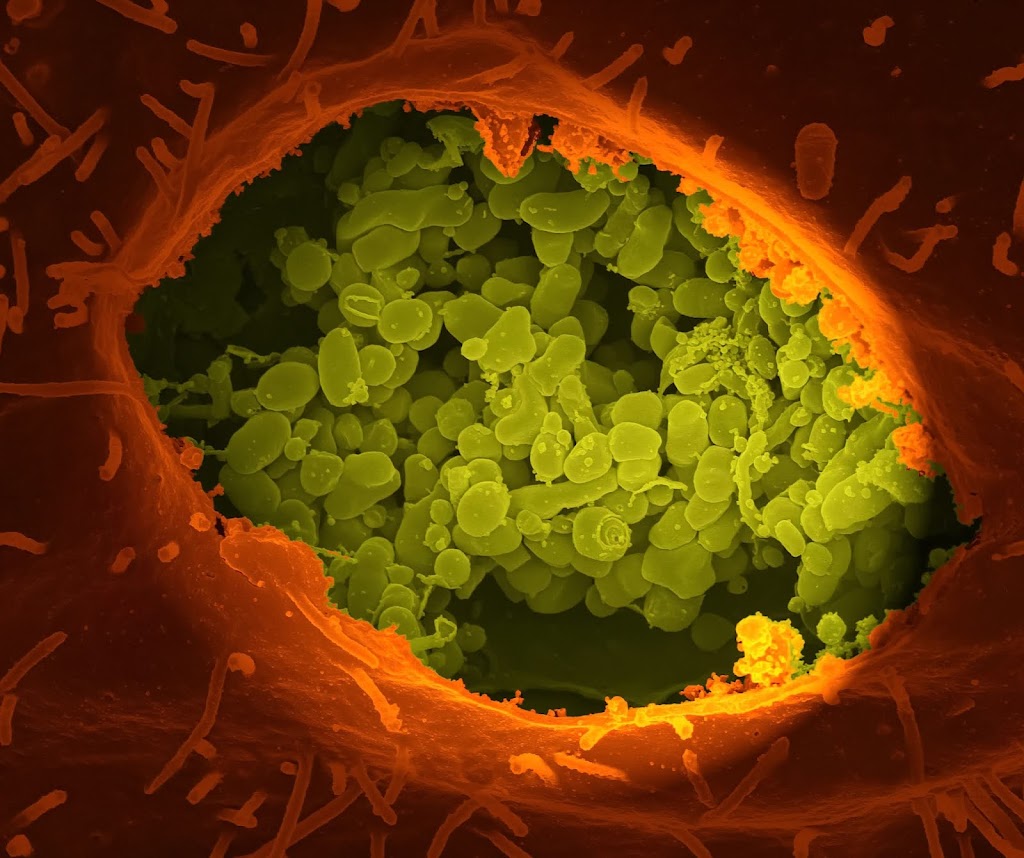The first formed organism:
About 4.6 billion years ago, the occurrence of the primordial atmosphere happened soon after the gases exploded from the giant volcanoes of our planet. This atmosphere mainly contains methane, carbon dioxide and hydrogen sulfide. The evolution of nature begins when the earth’s surface gets cooled, so solidification occurs, provoking water formation. Since the primordial atmosphere is oxygen-free, the first formed bacteria is anaerobic heterotrophic bacteria. The appearance of oxygen transpired only after the emergence of cyanobacteria. All these photosynthetic organisms filled the atmosphere with oxygen to react with methane transfiguring it permanently. This causes the existence of aerobic microorganisms on our planet. Let’s see how anaerobes pull through without oxygen.
Anaerobic organisms:
Anaerobes are microorganisms that engage in metabolism without molecular oxygen. Anaerobic organisms are mainly bacteria, fungi and protozoa. Anaerobes are found in the gastrointestinal tract, mouth, external genitalia and skin of the human body, and herbivores’ rumen.
Obligate anaerobes:
For some anaerobic organisms, the oxygen molecule is highly toxic and cannot live through oxygen. These are called obligate anaerobes. Significant examples are some species of: (CAPS)
Clostridium
Actinomyces
Propionibacterium
Streptococcus
Facultative anaerobes:
Some anaerobes can live with oxygen over and above without it. They are called facultative anaerobes. They grow well in the presence of oxygen when compared with the anaerobic condition.
Examples are Escherichia coli, Pseudomonas spp., Staphylococcus spp., Salmonella spp. and a fungus- Saccharomyces cerevisiae.
Aerotolerant anaerobes:
The third one is aerotolerant anaerobes that can tolerate oxygen but cannot live through in its presence. Examples are some species of lactobacilli and streptococci found in oral microbiota.
Do you ever wonder why aerobes need oxygen?
We depend on oxygen because it is an electronegative molecule, and it is required for oxidative phosphorylation. It occurs in the mitochondria, where all metabolic pathways release electrons in the form of electron carriers NADH and FADH2. They carry electrons into the mitochondria and donate into the series of complexes which causes reduction of O2 to H2O accompanied by generation of the proton gradient. This gradient will result in the production of ATP from ADP and Pi by ATP synthase (one of the complexes in mitochondria). That’s how our energy currency is produced, assisted by oxygen.
Let’s see the processes of how they undergo metabolism without oxygen. Anaerobes survive without oxygen in two ways:
1. Anaerobic fermentation
2. Anaerobic respiration
Anaerobic fermentation:
Notwithstanding the oxygen, glucose is incompletely oxidized to lactic acid (lactic acid fermentation) and ethanol (alcohol fermentation) through pyruvic acid.
Lactic acid fermentation:
It involves,
Homolactic process – produces two molecules of lactic acid from one molecule of glucose.
Heterolactic process – produces one molecule of lactic acid, one molecule of ethanol and a CO2 molecule. (lactic acid + ethanol + CO2)
Unlike aerobic glycolysis (aerobic respiration), the anaerobes do not produce water at the end and produce CO2 and only 2 ATPs.
Alcohol fermentation:
Alcohol or ethanol fermentation occurs with the help of zymase enzymes which produce two molecules of ethanol and CO2 from 2 molecules of pyruvic acid. The intermediate molecule is acetaldehyde.
C6H12O6 + Zymase → 2C2H5OH + 2CO2
Alcohol fermentation allows regenerating the NAD+ from NADH which is produced from glycolysis. Thus, stimulating the next glycolysis produces 2 ATPs. Note that in fermentation, glycolysis alone regards place because other pathways react only in the presence of oxygen.
Anaerobic respiration:
Microorganisms undergo respiration but without the need of molecular oxygen which is the final electron acceptor for aerobic organisms . It uses other electron acceptors at the end such as sulfate, fumarate or nitrate. Though they get oxidized yield less energy because of their less oxidizing property. Whereas oxygen on reduction produced high energy by oxidising into water.
Example: Sulfate is used as a final electron acceptor in sulfate reducing bacteria and produces hydrogen sulfide.
Industrial application of anaerobes:
1. In the brewing industry, yeast, i.e. saccharomyces which respires anaerobically, are used to produce alcoholic drinks like wine(ethanol) and beer(ethanol and carbon dioxide).
2. With the help of lactobacillus, streptococcus and aspergillus, the dairy industry makes cheese and soy sauce. The lactobacillus converts the lactose (milk sugar) into lactic acid, making the milk thick and curdles.
3. The carbon dioxide produced from the anaerobes is used in the baking industries to raise the dough in bread, cakes, and pastries.
Discover more from Aristoscienceworld
Subscribe to get the latest posts sent to your email.



